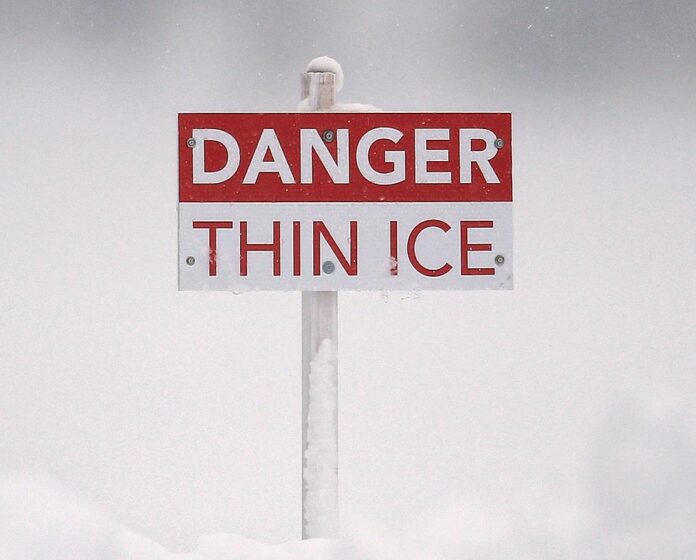
A new NOAA-sponsored report shows that unprecedented warming air temperature in 2016 over the Arctic contributed to a record-breaking delay in the fall sea ice freeze-up, leading to extensive melting of Greenland ice sheet and land-based snow cover.
Now in its 11th year, the Arctic Report Card (full report available at the bottom of this article), released at the annual American Geophysical Union fall meeting in San Francisco, is a peer-reviewed report that brings together the work of 61 scientists from 11 nations who report on air, ocean, land and ecosystem changes. It is a key tool used around the world to track changes in the Arctic and how those changes may affect communities, businesses and people.
“Rarely have we seen the Arctic show a clearer, stronger or more pronounced signal of persistent warming and its cascading effects on the environment than this year,” said Jeremy Mathis, director of NOAA’s Arctic Research Program. “While the science is becoming clearer, we need to improve and extend sustained observations of the Arctic that can inform sound decisions on environmental health and food security as well as emerging opportunities for commerce.”
Take a look at the short video of Arctic Report Card 2016.

Major findings in this year’s report include:
Warmer air temperature: Average annual air temperature over land areas was the highest in the observational record, representing a 6.3 degree Fahrenheit (3.5 degree Celsius) increase since 1900. Arctic temperatures continue to increase at double the rate of the global temperature increase.
Record low snow cover: Spring snow cover set a record low in the North American Arctic, where the May snow cover extent fell below 1.5 million square miles (4 million square kilometers) for the first time since satellite observations began in 1967.
Smaller Greenland ice sheet: The Greenland ice sheet continued to lose mass in 2016, as it has since 2002 when satellite-based measurement began. The start of melting on the Greenland ice sheet was the second earliest in the 37-year record of observations, close to the record set in 2012.
Record low sea ice: The Arctic sea ice minimum extent from mid-October 2016 to late November 2016 was the lowest since the satellite record began in 1979 and 28 percent less than the average for 1981-2010 in October. Arctic ice is thinning, with multi-year ice now comprising 22 percent of the ice cover as compared to 78 percent for the more fragile first-year ice. By comparison, multi-year ice made up 45 percent of ice cover in 1985.
Above-average Arctic Ocean temperature: Sea surface temperature in August 2016 was 9 degrees Fahrenheit (5 degrees Celsius) above the average for 1982-2010 in the Barents and Chukchi seas and off the east and west coasts of Greenland.
Arctic Ocean productivity: Springtime melting and retreating sea ice allowed for more sunlight to reach the upper layers of the ocean, stimulating widespread blooms of algae and other tiny marine plants which form the base of the marine food chain, another sign of the rapid changes occurring in a warming Arctic.
To Access the full Arctic Report 2016, click on below image:
Source: J. Richter-Menge, J. E. Overland, and J. T. Mathis, Eds., 2016: Arctic Report Card 2016.















